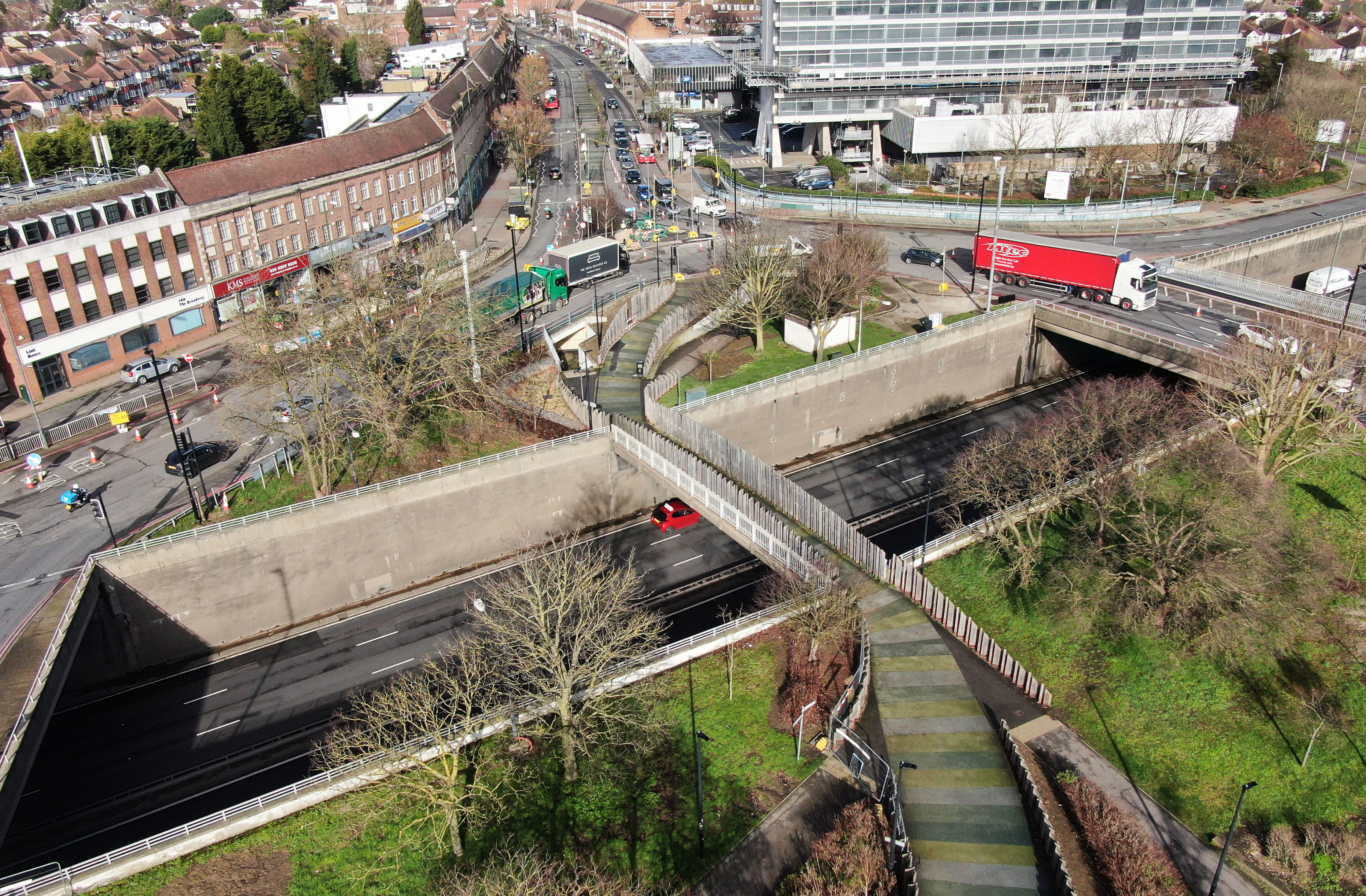Making Space - Tolworth Roundabout Improvements
Managing complex programme constraints was key to boosting capacity at an important London interchange.

Managing complex programme constraints was key to boosting capacity at an important London interchange.
Tolworth roundabout is a busy interchange in southwest London, where the A3 trunk road meets the A240 and the main roads into Kingston and Surbiton. The A3 runs below the roundabout, with slip roads taking the traffic between the levels, while pedestrians and cyclists can cross via a path and bridge through the middle of the roundabout.
The junction had always been busy, but with the construction of the Signal Park housing development on the southwest edge of the roundabout and a new HQ for supermarket giant Lidl further south, traffic levels were set to rise significantly.
Initial design started in 2017, with FM Conway appointed as contractor under its Surface Transport Infrastructure Construction (STIC) framework contract with TfL in 2021. “This is one of the more complicated jobs we’ve had on the framework to date,” says FM Conway Contracts Manager Matt Holland.
The bulk of the work was on Kingston Road, where an extra lane has been added on the northbound side and footways have been changed on both sides and in the central reserve to create more space for cyclists and pedestrians. But the FM Conway teams also worked on the roundabout itself, changing the kerb line, upgrading substandard parapets, infilling two subways with lightweight foam concrete, and upgrading the surface-level light-controlled crossings.
“It’s been a success because there’s been such good collaboration between all parties.” FM Conway’s Contracts Manager, Matt Holland.
TfL also saw the project as an opportunity to encourage biodiversity and manage flood risk from surface run off. Sustainable drainage solutions (SuDS) were installed throughout the works, including permeable paving for footways and cycleways, rain gardens, and tree pits. The largest area of SuDS is in the middle of the roundabout, where a tiered raingarden slows down and holds water. As well as collecting and filtering run off from over 6,000m2 of road surface, the planted areas enhance the environment and improve air quality.

“Our modelling showed that buses in the area could be significantly delayed during the morning and afternoon peak period if we didn’t act.” Stuart Eastmond, Project Manager, Transport for London
Challenges included programming the works to minimise disruption, coordinating with the contractor building the access into the new housing development, and ensuring there was no impact on the smooth running of the A3. Regular meetings with key stakeholders were critical to the project’s success, says Matt: “TfL had instigated coordination meetings with the housing developer and local authorities two years before we got onto site in April 2023. We joined those meetings six months before we started work. There are many programmes risks when you have interfaces with other parties, so it was really helpful that the meetings were already set up.”
Work started on the southbound side of Kingston Road, with the intention of building the new lane on the northbound side next. But delays with utility companies and negotiations over land acquisition meant that the work had to be reprogrammed to be done in small sections, rather than all in one go.
“It was challenging at times where the works areas were small, because of the size of machines and the number of operatives working in a small area,” explains FM Conway’s Site Agent, Phillip Yau.
In order to minimise disruption to traffic flow, works to demolish the old parapets and replace them with new barriers was carried out while traffic continued to flow, thanks to the installation of an encapsulation system which kept the works, and the public separated. The installation of the new parapet system was done with hydro-demolition, using high pressure water jets to precisely cut away the old concrete without damaging the existing bridge structure.
All major works were completed in April 2024, improving traffic flow for the increased demand on the junction and introducing sustainable drainage solutions that also improve the visual appearance of the junction and air quality. The hugely successful project is a great example of FM Conway’s self-delivery model coming together to deliver great infrastructure to Southwest London.